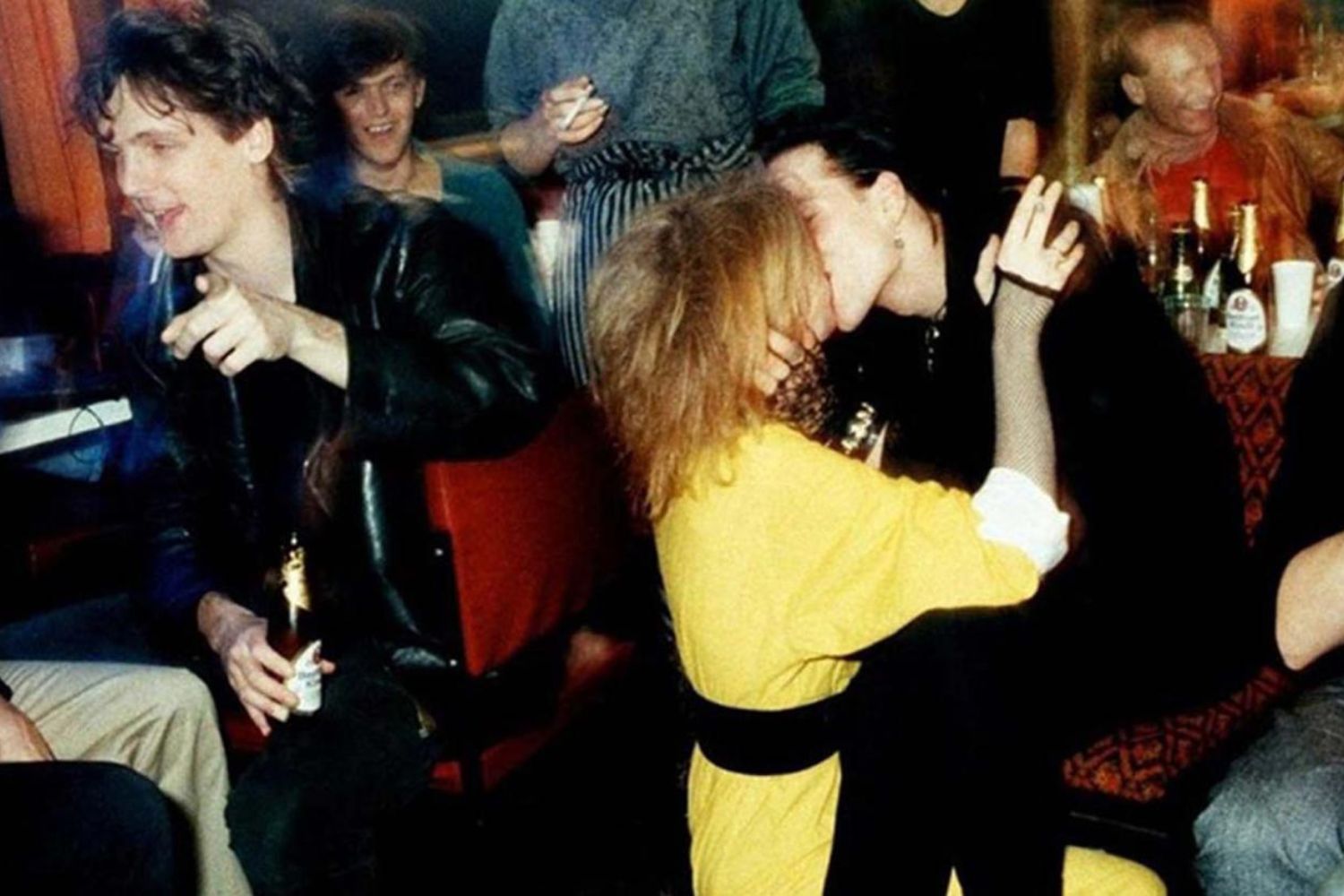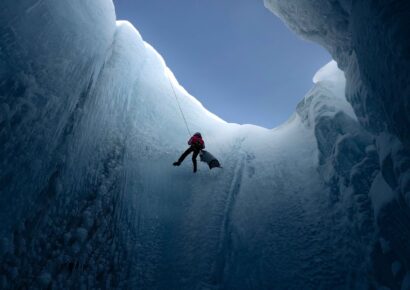In 1982, Nick Cave packed his bags and set out for Berlin.
He found a shabby apartment in the still war-torn corners of East Kreuzberg–an area known for its countercultural activity–and settled into the city that would become his home for the next few years.
Nick Cave’s Berlin was not the Berlin we know today. It was the Berlin of the Cold War; the wild west of pre-unification Germany, where decadence reigned supreme and life was best lived at night.
Keep up with the latest Melbourne film and television news here.
At this year’s German Film Festival, audiences are given a rare opportunity to dive into this elusive city that was once loved by the likes of Nick Cave, David Bowie and Iggy Pop. Presented by Palace Cinemas, Retrospective: Music, Art and Chaos–A Sonic Transmission from Berlin takes audiences on a filmic journey into the neon-drenched world of the West Berlin New Wave music scene.
“Music is where it all started; everything came from there,” says Zak Hepburn, film programmer and critic. Hepburn has spent the last year putting together the program for this retrospective, tirelessly tracking down the rights to screen, right here in Australia, some of the most influential films that emerged from this period.
For those unfamiliar with the scene, it was truly a sight to behold. Picture this: a bohemian community of post-punk musicians and artists dressed in their best leather sprawling across the dank, subterranean metropolis that was West Berlin–all in pursuit of freedom, all in search for radical creativity.
“What I find so attractive about viewing these films is that there’s a sense of creative adventure,” says Hepburn. “Being in the city was kind of like being given a creative free pass. It was this idea of a community coming together and fostering each other creatively.”
This creative energy permeated the city, and it made West Berlin irresistible to musicians and artists from all over Germany and around the world who were searching for something new, something original. David Bowie famously recorded his Berlin Trilogy in the city. It was at Hansa Tonstudio in Kreuzberg–only 150 metres away from the wall–that Bowie recorded Heroes in 1977.
In the retrospective, the chaotic, decadent spirit of the city comes through in Mark Reeder’s breathtaking 2015 film, B-Movie: Lust & Sound in West Berlin 1979-89. Directed by Jörg A. Hoppe, Heiko Lange and Klaus Maeck, this documentary presents us with a vivid picture of life in West Berlin during this exceptionally creative decade.
They say that if you can remember the 80s, then you weren’t really there. But in B-Movie, the filmmakers had the good fortune of being able to access archival footage and photographs from this period. Featuring unreleased tapes and original interviews with Nick Cave, Blixa Bargeld, Nena, Joy Division and Gudrun Gut, B-Movie provides an immersive glimpse into the city that once was.
“Berlin has this really unique atmosphere. It’s simultaneously stimulating and scary,” considers Hepburn. “There are very few cities in the world that have this dual personality. I think Melbourne is one of them, but for me, it’s always been personified by Berlin. There’s a chaos of creation, but there’s a grand order within that chaos.”
As much as West Berlin was known for its grittiness and grime, there was still plenty of room for highly stylised art and poetry to emerge. Hepburn cites Wim Wenders’ 1987 film Wings of Desire – the universally lauded film for which Wenders won Best Director at Cannes later that year–as an example of the poetic beauty that the city was capable of producing. As the angel Damiel soars over the city’s streets, we see what can only be described as a tender love letter to Berlin unfold before our eyes.
And then there’s Decoder, the 1984 cult hit directed by Muscha that spawned out of the city’s disenfranchised youth culture and urban industrial aesthetics. The film’s saturated, cyberpunk visuals are spectacular to look at; and Hepburn tells me that there probably won’t be another opportunity to see Decoder in Australian cinemas again, given that the rights to the film are notoriously difficult to track down.
“We wanted the films to have that chaotic dynamic friction while still being able to talk to each other,” Hepburn explains. “You’ve got the B-Movie documentary, which provides a catalyst for viewers to go off on different journeys. But then you have something that’s so strange like Decoder, which is this avant-garde, experimental drama. And then you’ve got the very prestigious Wings of Desire, which is not necessarily about that moment in time but heavily influenced by the scene. These pieces of work are very different but they all work together.”
It can be tempting, particularly in retrospectives, to blindly romanticise the past. One strange side effect of the passage of time is that we always seem to remember things to be better than they actually were. In the case of West Berlin, yes, the city was inspiring and thrilling; but there was also a darker, more sinister side to all the parties and discos and concerts.
“We look back on this time and think of the genius creativity that was happening in the city, but there was a very real dark edge to that creativity,” says Hepburn. “I think that acknowledging this and showcasing this is the only correct way to give the viewer a real, honest glimpse into that period.”
That’s one reason why Hepburn decided to include the controversial 1981 film, Christiane F. in the retrospective. Based on We Children of Bahnhof Zoo, a non-fiction book about the life of Christiane Felscherinow, Christiane F. follows the bleak journey of a bored, aimless 14-year-old girl who falls into the city’s drug scene during the 1970s.
Hepburn refers to this film as the linchpin of the retrospective, valuable not only for its portrayal of the city itself (the film was mostly shot guerilla style in the surrounds of Gropiusstadt and Bahnhof Zoo), but also for its honest portrayals of youth disenfranchisement and addiction. It’s not a pretty story, and it’s not easy to watch–but the story it tells is as powerful today as it was back then.
A whole generation has passed since the fall of the Berlin Wall. For many, West Berlin exists today only as an elusive memory, nothing more. But the influence of 1980s Berlin is evident everywhere we look: in music, in film, in art and in fashion. This retrospective reminds us that inspiration can be found in the unlikeliest of places. Extraordinary creativity can happen anywhere and at any time; that’s the magic of it.
The German Film Festival, presented by Palace Cinemas, will take place nationally from May 2 to May 24 in Melbourne, Sydney, Adelaide, Perth, Canberra, Brisbane and Byron Bay. Tickets are now on sale, grab them by heading here.

